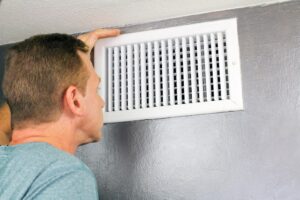Did you know that the products that you bring into your home can degrade your indoor air quality? The danger comes in the form of volatile organic compounds, and too much of them can cause health problems. However, you can reduce the amount of VOCs in your home by learning what they are and following a few tips.
An Overview of Volatile Organic Compounds
VOCs are a range of chemicals that liquids and solids emit in the form of gases. There are two to five times higher concentrations of VOCs indoors than outdoors. Thousands of household products contain these gas-emitting chemicals, including air fresheners, paint, disinfectants and cleaning materials. Hobby supplies, furniture and makeup also contain VOCs.
These and other products release VOCs when you use them. However, some of them release VOCs even when you don’t use them. They can also cause short- and long-term health issues such as headaches, dizziness, memory and visual impairments, and eye and respiratory irritation. VOCs can lead to poor coordination, cancers and damage to the central nervous system, kidneys and liver as well.
Reduce Exposure and Improve Your Indoor Air Quality
One way that you can reduce your and your family’s exposure to VOCs is to limit how much you buy of products that emit these gases. When you use them, increase ventilation throughout your house. For example, turn on exhaust fans in bathrooms and kitchens, and open your windows and doors.
You can also boost the quality of your indoor air by upgrading and maintaining your HVAC system. Modern heating and cooling equipment circulates outdoor air inside of your home. It also pulls out contaminated air to reduce exposure and prevent health issues. You can enhance these functions further by keeping your exterior unit and indoor vents clean and replacing your air filters regularly.
Do you want to learn more about improving your indoor air quality? You can get more tips with Sullivan Oil & Propane’s ways to reduce indoor air pollution or by calling (610) 810-3992.



